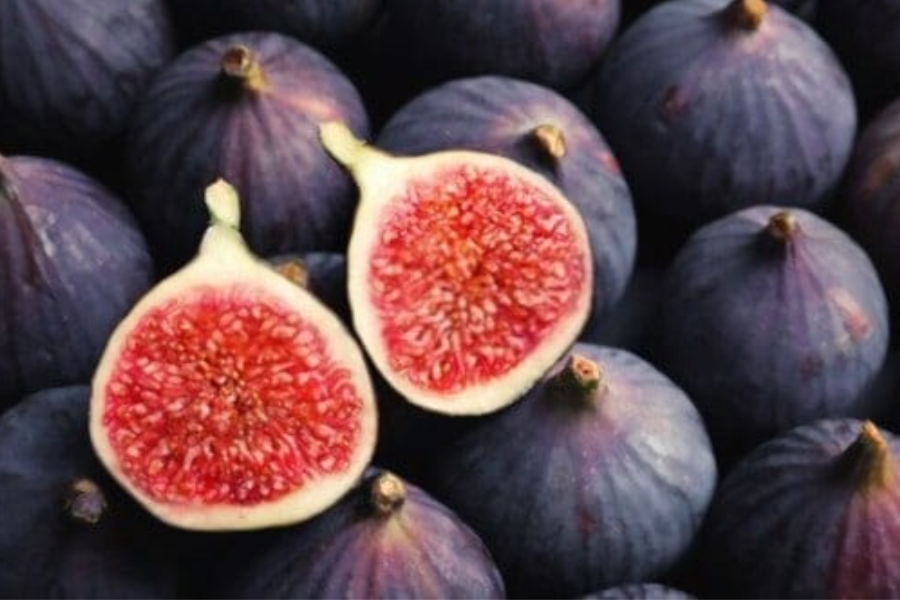Friday Fig: Unveiling the Secrets of this Exquisite Fruit
Introduction
The Friday Fig, or Ficus carica, is more than just a delectable fruit; it’s a marvel of nature with a rich history and diverse applications. Renowned for its sweet flavor and high sugar content, this ancient fruit has been cherished for millennia. In this comprehensive exploration, we’ll delve into the origins, varieties, nutritional benefits, culinary uses, and cultural significance of the Friday Fig, uncovering why this fruit has remained a staple in kitchens and cultures around the world.
The History and Origin of the Friday Fig?
The Friday Fig’s journey through history is as fascinating as its taste. Believed to have originated in the Middle East, figs have been cultivated since ancient times. Archaeological evidence suggests that figs were among the first crops cultivated by humans, with their cultivation dating back to around 5000 BC. These fruits were highly valued in ancient civilizations such as Egypt, Greece, and Rome. In biblical texts and historical writings, figs are often mentioned as symbols of prosperity and peace.
Figs have held a place of importance in various religious and cultural contexts. For instance, they are prominently featured in the dietary laws of the Bible and the Koran, highlighting their significance in ancient dietary practices. The historical reverence for figs extends beyond their nutritional value to their role in rituals and traditions, making them a fruit of both historical and spiritual significance.
Varieties of Friday Figs
The Friday Fig comes in an array of varieties, each boasting unique characteristics. Here are some of the most notable types:
- Black Mission: Known for its dark purple skin and sweet, rich flavor, the Black Mission fig is often enjoyed fresh or dried. Its intense sweetness and smooth texture make it a favorite among fig enthusiasts.
- Brown Turkey: This variety features a reddish-brown skin and a mildly sweet taste. It is versatile and commonly used in both cooking and baking.
- Kadota: With its greenish skin and honey-like flavor, the Kadota fig is often used in preserves and fig-based recipes. Its delicate sweetness and smooth flesh are prized in culinary circles.
- Calimyrna: Recognizable by its light green skin and nutty flavor, the Calimyrna fig is often used in high-end dishes and gourmet recipes. Its unique taste profile adds depth to both sweet and savory dishes.
Each variety of Friday Fig brings its own distinct flavor and texture, offering a wide range of possibilities for culinary experimentation and enjoyment.
Nutritional Benefits of Friday Figs
Friday Figs are not just a treat for the palate; they also offer a wealth of nutritional benefits. Packed with vitamins, minerals, and fiber, figs are a powerhouse of nutrition. Here’s a breakdown of their key health benefits:
- Vitamins and Minerals: Figs are rich in essential vitamins such as vitamin A, vitamin K, and several B vitamins. They also provide important minerals including potassium, magnesium, and calcium. These nutrients contribute to overall health, supporting everything from bone strength to heart function.
- Fiber: One of the standout features of figs is their high fiber content. Fiber aids in digestion, promotes a healthy gut, and can help prevent constipation. The soluble fiber in figs also helps regulate blood sugar levels and supports cardiovascular health.
- Antioxidants: Figs are loaded with antioxidants, which help combat oxidative stress and reduce inflammation. The antioxidants in figs, including polyphenols and flavonoids, contribute to overall health and may help protect against chronic diseases.
Incorporating figs into your diet provides these health benefits while adding a delicious element to your meals.
Culinary Uses and Recipes
The versatility of Friday Figs makes them a gourmet delight in the kitchen. Their sweet and savory applications span a wide range of dishes:
- Salads: Fresh figs add a burst of sweetness to salads. Try them in a mixed green salad with goat cheese, walnuts, and a balsamic vinaigrette for a delicious contrast of flavors.
- Desserts: Figs shine in desserts, whether baked into tarts, paired with cheese in a fig and almond cake, or simply enjoyed fresh with a dollop of cream or yogurt.
- Jams and Chutneys: Fig preserves and chutneys offer a sweet and tangy addition to sandwiches, cheese platters, and charcuterie boards. Homemade fig jam can also be a delightful gift.
- Savory Dishes: Figs can be used in savory recipes as well. Try them stuffed with cheese and nuts, wrapped in prosciutto, or added to roasted meats for a unique flavor profile.
The culinary potential of Friday Figs is vast, making them a valuable ingredient for both everyday meals and special occasions.
Growing and Harvesting Friday Figs
For those interested in cultivating their own figs, understanding the growing and harvesting process is crucial. Here’s a guide to successfully growing and harvesting Friday Figs:
- Climate and Soil: Figs thrive in warm, temperate climates with well-drained soil. They prefer full sun and can tolerate a range of soil types, although they perform best in sandy loam.
- Planting: When planting fig trees, ensure they are spaced appropriately to allow for their spreading branches. Figs can be grown from seeds, cuttings, or young nursery plants.
- Care: Regular watering is essential, particularly during dry spells. Figs benefit from a balanced fertilizer application in early spring. Pruning is also important to maintain tree health and improve fruit production.
- Harvesting: Figs are typically harvested when they are fully ripe and slightly soft to the touch. They do not continue to ripen once picked, so it’s important to pick them at the right stage. Harvest figs gently to avoid damaging the fruit or the tree.
With proper care, fig trees can provide bountiful harvests of this delightful fruit.
Health Benefits and Medicinal Uses
For centuries, figs have been celebrated for their medicinal properties. Their health benefits extend beyond basic nutrition:
- Digestive Health: The high fiber content in figs supports digestive health, helping to prevent constipation and promote regular bowel movements.
- Heart Health: The potassium and fiber in figs contribute to cardiovascular health by helping to regulate blood pressure and reduce cholesterol levels.
- Anti-Inflammatory Effects: The antioxidants in figs have anti-inflammatory properties, which may help reduce inflammation and lower the risk of chronic diseases.
Figs have long been used in traditional medicine to address various health issues, and modern research continues to validate their therapeutic benefits.
Friday Figs in Culture and Traditions
The cultural significance of Friday Figs spans numerous civilizations and traditions. In many cultures, figs are associated with fertility, abundance, and prosperity:
- Religious Symbolism: Figs are mentioned in religious texts as symbols of peace and plenty. They have been used in various rituals and offerings throughout history.
- Cultural Festivals: Many cultures celebrate the fig with festivals and events that highlight its significance. These celebrations often include traditional dishes, folklore, and community gatherings centered around the fig.
- Folklore and Superstitions: In some cultures, figs are believed to possess protective qualities or bring good fortune. They are often featured in traditional stories and superstitions.
The rich cultural heritage of figs reflects their enduring importance across different societies.
How to Choose and Store Friday Figs
To enjoy the best flavor and freshness, proper selection and storage of figs are essential:
- Choosing Figs: Look for figs that are plump, tender, and slightly soft to the touch. They should have a vibrant color and a sweet aroma. Avoid figs with visible bruises or signs of mold.
- Storing Figs: Fresh figs should be stored in the refrigerator and consumed within a few days for optimal flavor. If you need to store them for longer, consider drying them to preserve their shelf life.
- Ripening: If figs are not yet ripe, you can leave them at room temperature to ripen. Once ripe, transfer them to the refrigerator to prevent over-ripening.
Proper handling and storage ensure that you enjoy figs at their peak of flavor and quality.
Fun Facts about Friday Figs
Here are some intriguing and entertaining facts about Friday Figs:
- Ancient Treat: Figs were a favorite food of ancient Roman emperors and were often included in lavish feasts and banquets.
- Symbol of Fertility: In ancient Greece, figs were considered a symbol of fertility and were often used in wedding ceremonies and celebrations.
- Unique Texture: The fig’s tiny seeds contribute to its unique texture and are a distinctive feature of the fruit.
These fun facts highlight the fig’s fascinating history and distinctive characteristics.
Friday Fig Festivals Around the World
Friday Fig festivals celebrate the fruit’s cultural significance and culinary versatility. Here are some notable fig festivals:
- Fig Festival in Turkey: Turkey hosts annual fig festivals that showcase traditional dishes, folk music, and cultural performances centered around the fig.
- Fig Festival in Spain: Spain’s fig festivals include parades, cooking demonstrations, and competitions, celebrating the fig’s role in Spanish cuisine.
- Fig Harvest Festival in the U.S.: Various regions in the United States hold fig harvest festivals featuring local fig-based dishes, crafts, and community events.
These festivals offer a vibrant celebration of the fig’s cultural importance and provide an opportunity to experience its diverse uses.
Sustainability and Friday Fig Farming
As demand for figs grows, sustainable farming practices become increasingly important:
- Organic Farming: Using organic methods reduces the environmental impact of fig cultivation and promotes soil health.
- Water Conservation: Efficient irrigation practices help conserve water and ensure the long-term sustainability of fig farms.
- Pest Management: Integrated pest management strategies minimize the use of chemical pesticides and promote natural pest control.
Sustainable fig farming practices help ensure that this delightful fruit can continue to be enjoyed for generations to come.
Friday Figs: A Versatile Ingredient in Modern Cuisine
In contemporary kitchens, Friday Figs are making their mark in innovative recipes:
- Gourmet Dishes: Chefs are using figs in creative ways, incorporating them into gourmet dishes such as fig and prosciutto pizza, fig-glazed meats, and fig-infused cocktails.
- Health-Conscious Recipes: Figs are featured in health-conscious recipes like fig and nut energy bars, fig-based smoothies, and wholesome salads.
- Home Cooking: Home cooks are experimenting with figs in everyday recipes, adding them to baked goods, salads, and sauces for a touch of sweetness and complexity.
The fig’s versatility makes it a valuable ingredient in both professional and home kitchens.
Potential Drawbacks and Allergies
While figs offer many benefits, some individuals may experience negative reactions:
- Allergies: Some people may be allergic to figs, experiencing symptoms such as itching, swelling, or gastrointestinal discomfort. It’s important to be aware of potential allergies and consult a healthcare professional if needed.
- Digestive Issues: Overconsumption of figs may lead to digestive issues, particularly for individuals with sensitive stomachs or digestive conditions.
Awareness of potential drawbacks ensures that figs can be enjoyed safely and comfortably.
Conclusion: Embracing the Friday Fig
Friday Figs are more than just a delightful fruit; they represent a rich history, offer significant nutritional benefits, and play a vital role in various cultures and cuisines. By incorporating Friday Figs into our meals, we not only savor their exquisite flavor but also connect with a tradition that spans centuries. Whether enjoyed fresh, dried, or as part of a gourmet dish, Friday Figs continue to be a cherished fruit, celebrated for their taste, versatility, and cultural significance.
Facts
- Historical Significance: Figs (Ficus carica) have been cultivated for over 5,000 years, with origins traced back to the Middle East. They were a staple food in ancient civilizations such as Egypt, Greece, and Rome.
- Varieties: There are several popular varieties of figs including Black Mission, Brown Turkey, Kadota, and Calimyrna, each with distinct flavors and uses.
- Nutritional Value: Figs are rich in essential nutrients like vitamins A, K, B-complex, potassium, magnesium, and calcium. They are also high in dietary fiber and antioxidants.
- Culinary Uses: Figs are versatile in the kitchen, used in salads, desserts, jams, chutneys, and savory dishes. They can be enjoyed fresh or dried.
- Cultural Importance: Figs are mentioned in religious texts and hold cultural significance in various traditions, symbolizing peace, prosperity, and fertility.
- Growing Conditions: Figs thrive in warm climates with well-drained soil. They require full sun and regular watering but are relatively low-maintenance.
- Health Benefits: Figs promote digestive health, support cardiovascular function, and provide anti-inflammatory benefits. They are used in traditional medicine for their therapeutic properties.
- Sustainability: Sustainable fig farming practices include organic methods, water conservation, and integrated pest management to minimize environmental impact.
- Festivals: Around the world, fig festivals celebrate the fruit’s significance with cultural events, traditional dishes, and community gatherings.
- Potential Drawbacks: Some individuals may experience allergies or digestive discomfort from figs, especially when consumed in large quantities.
Summary
Friday Figs (Ficus carica) are a historically rich fruit known for their sweet flavor and high nutritional value. Originating in the Middle East, figs have been a part of human diets for over 5,000 years. They come in various varieties, including Black Mission, Brown Turkey, Kadota, and Calimyrna, each with unique characteristics. Nutritionally, figs are packed with vitamins, minerals, fiber, and antioxidants, offering numerous health benefits such as improved digestion and cardiovascular support.
In culinary applications, figs are used in a wide range of dishes, from salads and desserts to jams and savory recipes. They have cultural significance across many traditions, symbolizing peace and prosperity. Fig cultivation requires a warm climate and well-drained soil, and sustainable farming practices are essential for minimizing environmental impact. Despite their many benefits, figs can cause allergic reactions or digestive issues in some individuals. Celebrated worldwide through festivals and traditions, figs continue to be a cherished and versatile fruit.
FAQs
1. What is a Friday Fig?
A Friday Fig, scientifically known as Ficus carica, is a fruit with a sweet flavor and high sugar content. It has been cultivated for thousands of years and is valued for its nutritional benefits and culinary versatility.
2. Where did Friday Figs originate?
Friday Figs are believed to have originated in the Middle East, with cultivation dating back to around 5000 BC. They were significant in ancient civilizations such as Egypt, Greece, and Rome.
3. What are the main varieties of Friday Figs?
Notable varieties include Black Mission, Brown Turkey, Kadota, and Calimyrna. Each type has its own unique flavor, color, and texture.
4. What are the nutritional benefits of Friday Figs?
Figs are rich in vitamins (A, K, and B-complex), minerals (potassium, magnesium, and calcium), fiber, and antioxidants. They support digestive health, cardiovascular function, and offer anti-inflammatory benefits.
5. How can I use Friday Figs in cooking?
Figs can be used in a variety of dishes, including salads, desserts, jams, chutneys, and savory recipes. They can be enjoyed fresh or dried, and their versatility makes them a valuable ingredient in many recipes.
6. How should I choose and store Friday Figs?
Choose figs that are plump, tender, and slightly soft. They should have a vibrant color and sweet aroma. Store fresh figs in the refrigerator and consume them within a few days. For longer storage, consider drying them.
7. What are the health benefits of Friday Figs?
Figs promote digestive health, support cardiovascular function, and provide anti-inflammatory benefits. They are used in traditional medicine to address various health issues.
8. Are there any potential drawbacks to eating Friday Figs?
Some individuals may experience allergies or digestive discomfort from figs, especially if consumed in large quantities. It’s important to be aware of any personal sensitivities.
9. What is the significance of Friday Figs in culture and tradition?
Figs hold cultural significance in many traditions, symbolizing peace, prosperity, and fertility. They are mentioned in religious texts and featured in various cultural festivals and rituals.
10. How can I grow Friday Figs sustainably?
Sustainable fig farming practices include using organic methods, conserving water, and managing pests through integrated pest management. These practices help reduce environmental impact and support long-term fig cultivation.





